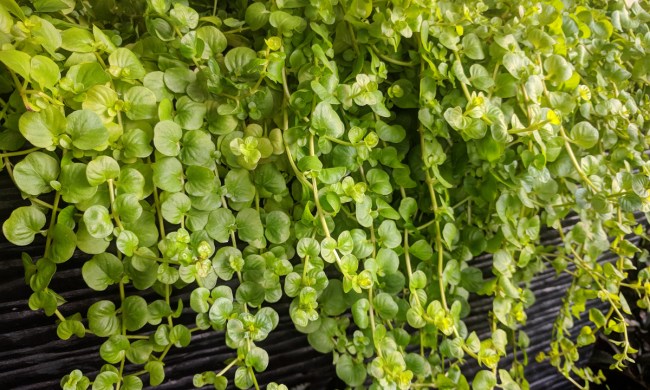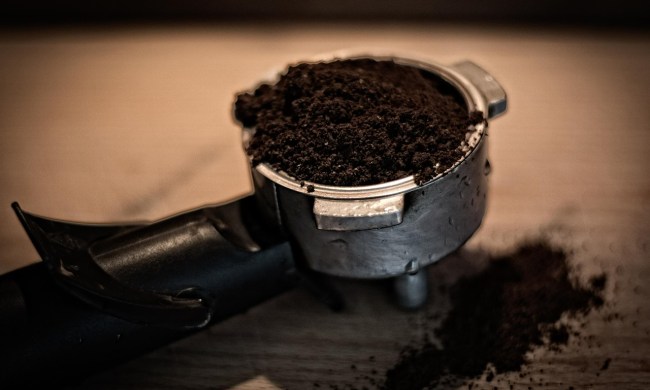Ivy is a stately, elegant plant. Its winding vines and distinctive leaves make it instantly recognizable to most people. It’s generally one of the easiest plants to grow indoors, which is good news for beginner plant enthusiasts. It might even be too easy, as it can grow quickly and become a nuisance if you're not paying attention.
When inside, ivy typically grows slow enough that the vining is manageable, but it can still sneak its way into places you don’t want it. If you have or are planning to get indoor ivy plants, here’s what you can do to keep them lush yet under control.
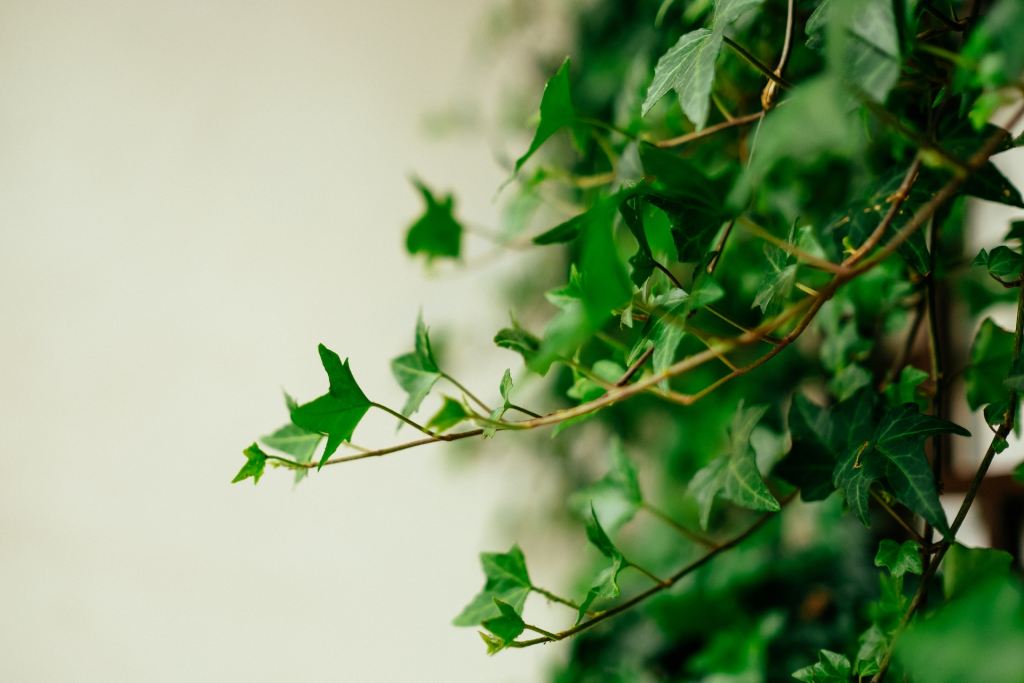
What is ivy?
Ivy is a genus that features 15 species of evergreen vining plants. While English ivy is one of the most popular forms of ivy, the plant is technically native to both Europe and Asia, including parts of Scandinavia and Russia. Many ivy varieties feature three to five leaf lobes and climb on walls and fences thanks to the aerial roots on their stems — that said, some types are used as groundcover in landscaping, too. Ivy is a prolific grower: If you've ever seen trailing ivy around, you won't be surprised to find out that it can grow 80 feet long and spread 50 feet wide.
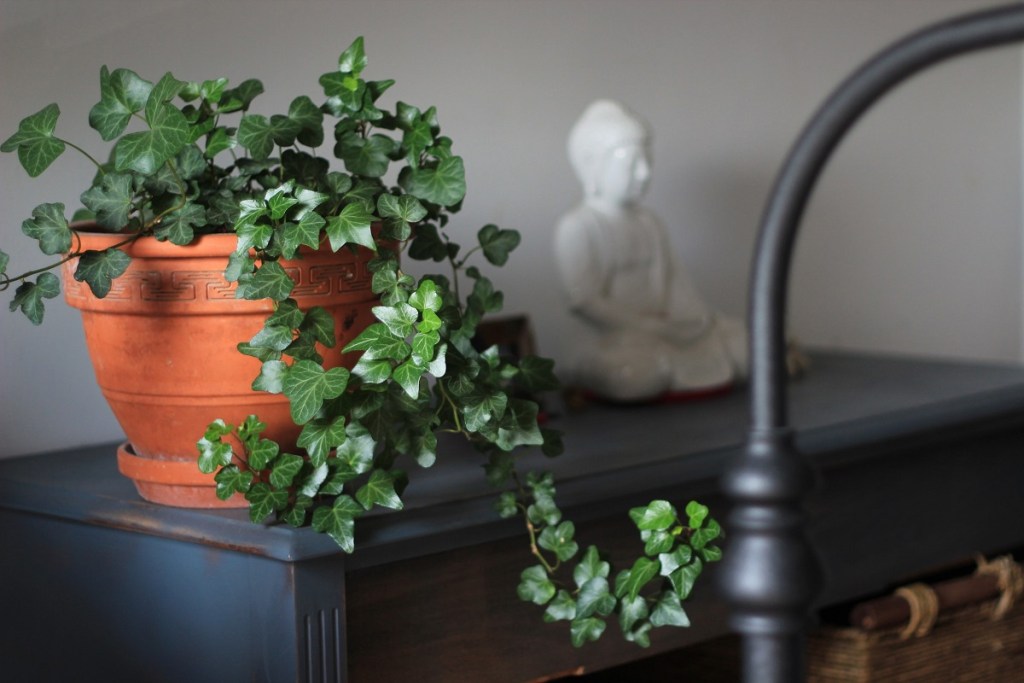
The best indoor ivy plant varieties
When people picture ivy in their heads, they’re most often picturing English ivy. This type of ivy can grow indoors, and it’s a hardy plant, which makes it easy to grow. However, it also tends to grow very quickly. For a smaller, easier-to-control-plant, check out one of these varieties.
- Glacier ivy: Glacier ivy is a variety of English ivy, but it was cultivated specifically for indoor growth, making it much tamer than the standard English ivy. It enjoys bright, indirect light and is sensitive to overwatering.
- Bettina ivy: Bettina ivy, another indoor English ivy variety, stays quite small, making it a popular desk plant. As with most English ivies, provide it with several hours of bright, indirect light a day, and be sure the soil goes dry between waterings.
- Ivy lookalikes: In addition to these true ivies, you can achieve a similar trailing aesthetic with less aggressive ivy lookalikes. Pothos and philodendron are both exceptional houseplants with lovely trailing vines that won’t spread across your entire home. The typical trailing pothos, in particular, is popular for its extreme tolerance, as this plant is notably hard to kill.
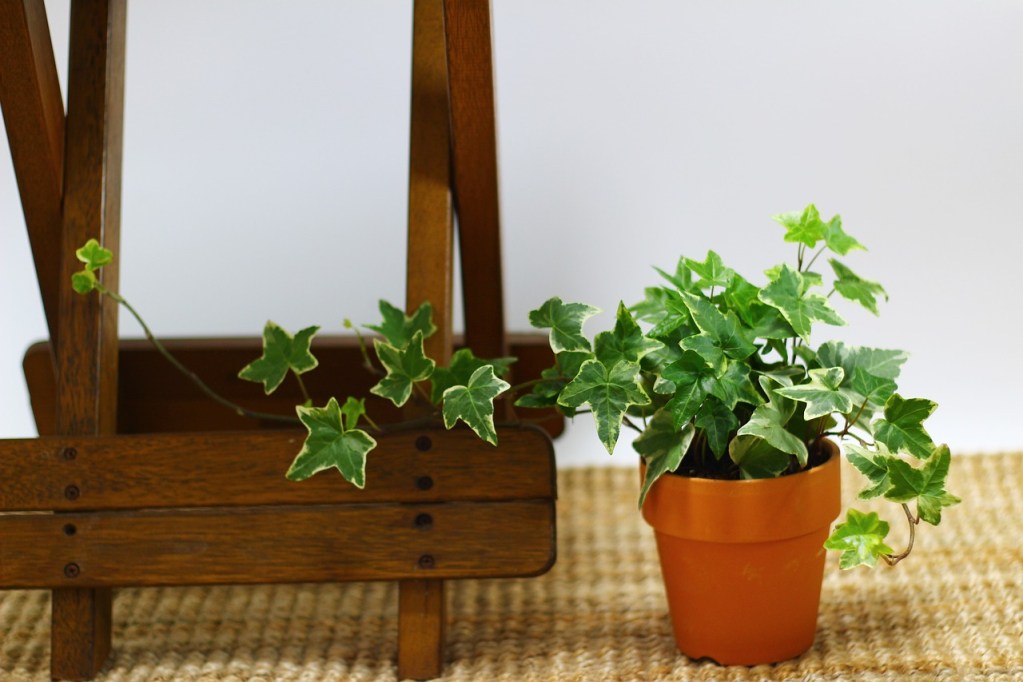
Caring for your indoor ivy plant
Keeping your ivy happy and healthy indoors is important. Plants that aren’t getting adequate sun, for example, tend to get leggy, growing taller or leaning over to reach for the sun. When trying to keep a vining plant small, this is especially important to keep in mind. Basic ivy care depends largely on the type of ivy you have. Here are the basics:
Step 1: Plant your ivy in indirect light with some shade.
English, Persian, and Irish ivy all prefer bright, indirect light and have mild shade tolerance. Algerian ivy is slightly less shade tolerant, and Himalayan ivy prefers more shade.
Step 2: Plant your ivy in well-draining soil.
Algerian ivy prefers a bit more moisture than other ivy varieties, and Himalayan ivy likes slightly acidic soil. However, they all prefer well-draining soil.
Step 3: Choose a variety that fits the level of care you can give.
You can keep some varieties of Persian ivy indoors, but Irish ivy is even more aggressive than English ivy. Algerian ivy is less aggressive than English ivy, but is adept at climbing even without a trellis. Himalayan ivy is also less aggressive and does have some houseplant-compatible varieties.
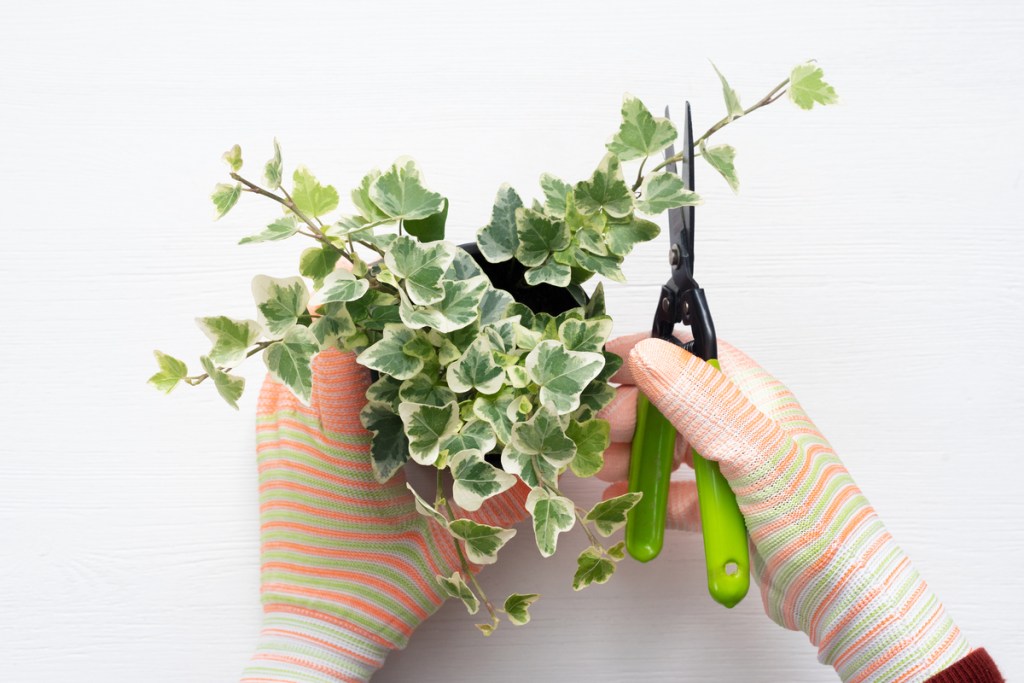
Keeping your indoor ivy plant small
Besides proper care, here are a few things you can do to ensure your ivy stays under control. The key thing is to have realistic expectations about the natural behavior of ivy.
Step 1: Give your ivy room to grow.
Keep the hanging basket or pot in an open space, so the vines can trail or climb.
Step 2: Keep the vines untangled.
The vines may attempt to grow up the handle of your hanging basket or over nearby furniture. Gently untangle the vines and lay them back where they need to grow.
Step 3: Give your ivy a little trellis or something to climb on.
Keeping ivy on a trellis is much easier than keeping it from growing at all.
Step 4: Regularly prune your ivy to keep it in check.
Unlike pruning rose bushes or trees, you can prune ivy with your hands or with clippers. Cut it just above a leaf for the best results. There’s no particular time of year to prune ivy; you can prune your plant any time you need to.
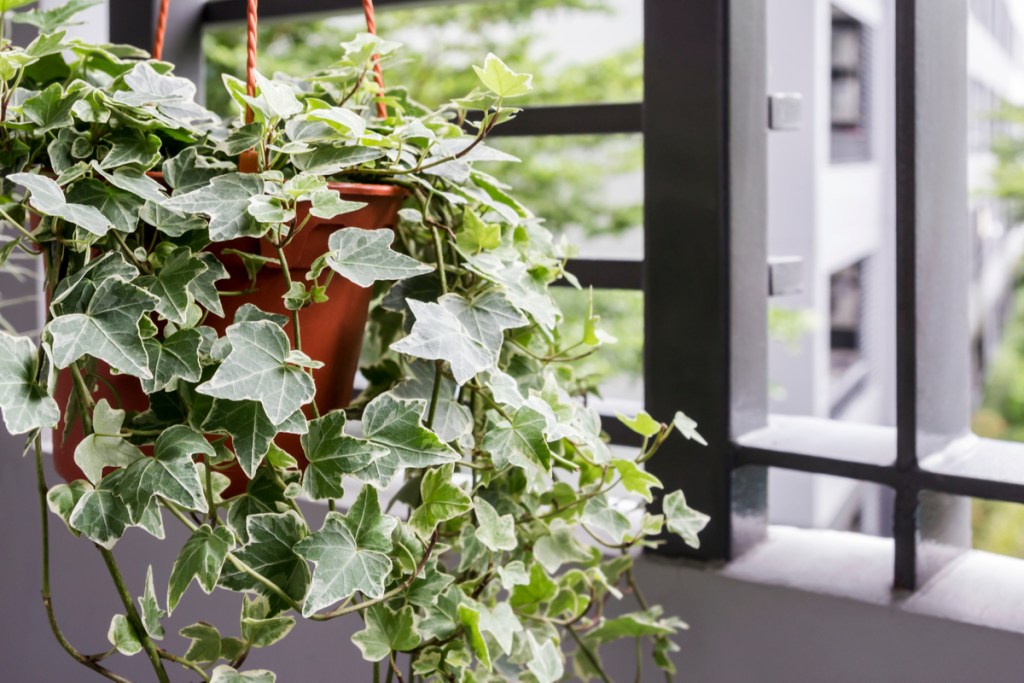
Propagating your indoor ivy plant
When pruning, you can either toss the cuttings or plant them in soil or water to propagate an entirely new ivy plant! Here's how.
Step 1: Cut a piece of stem that is a couple inches long with one or two leaf nodes.
Step 2: Apply rooting hormone to the end of the cutting.
Step 3: Place the cutting in a small pot of soil or a small jar of water.
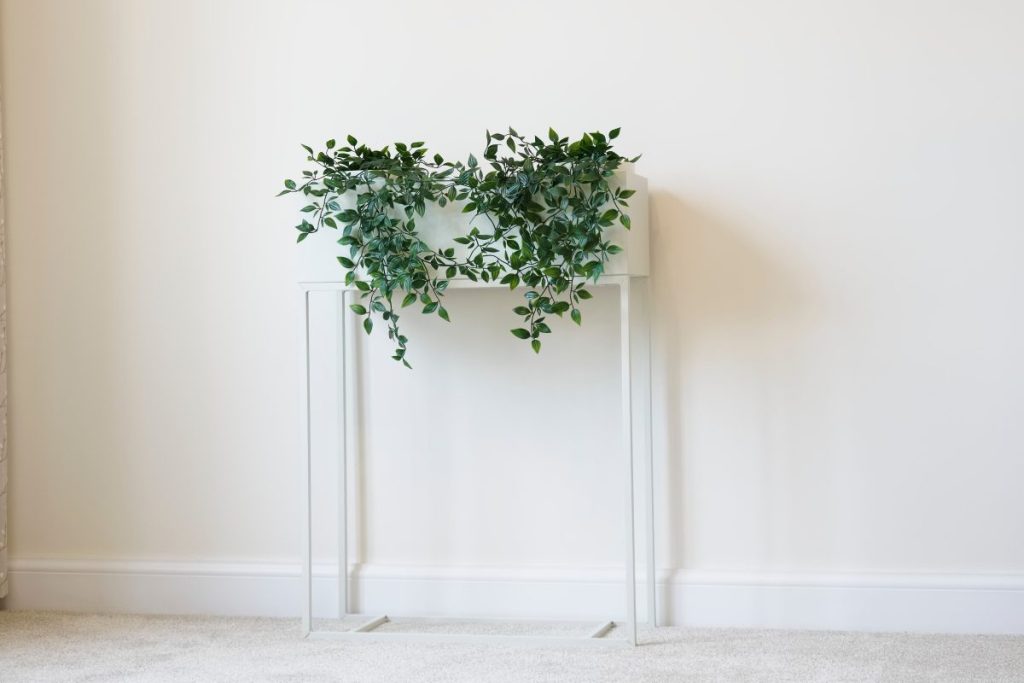
Troubleshooting problems with ivy
If your ivy’s leaves are turning brown or wilting, there may be a few things going on.
Step 1: Check that your plant is getting the right amount of light.
Ivy is fairly shade tolerant on a whole, but too much shade will slow its growth. On the flip side, too much light can lead to leaves browning at the edges.
Step 2: Make sure your ivy isn't being overwatered or underwatered.
Step 3: Place your ivy near other houseplants or near a small tray with stones and water to promote the air quality (particularly the humidity) around it.
Step 4: Check for pests or fungi.
Just like any other plant, mold in soil or pests munching on leaves can weaken your ivy. If you find any, you should first identify what pest or fungus you're dealing with, as treatment can vary dramatically.
Long story short, start with an indoor ivy variety and then make sure it’s getting the correct amount of sun. After locating the just-right spot, give your plant space and a structure to climb, then prune it when it gets too long. By following these simple tips, you can grow ivy indoors to your heart’s content without worry or fear. Enjoy your elegant indoor ivy plant!


